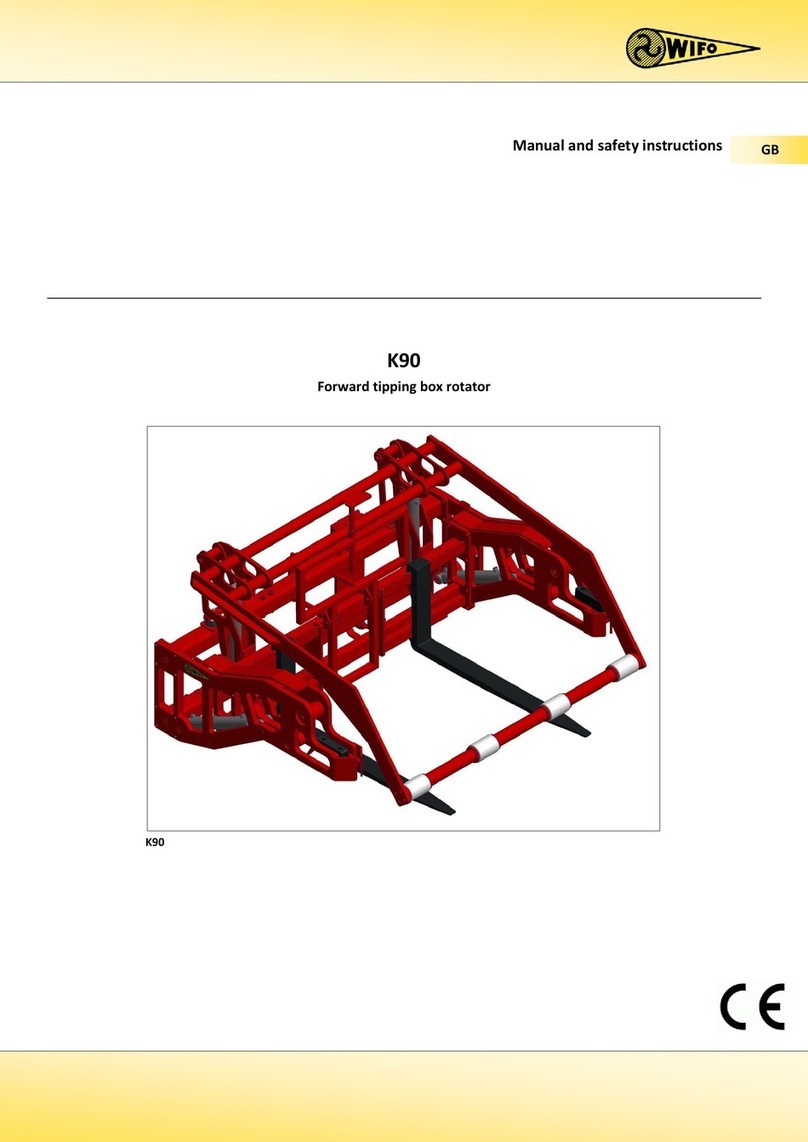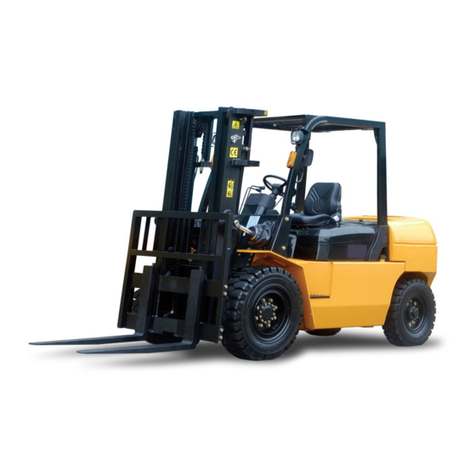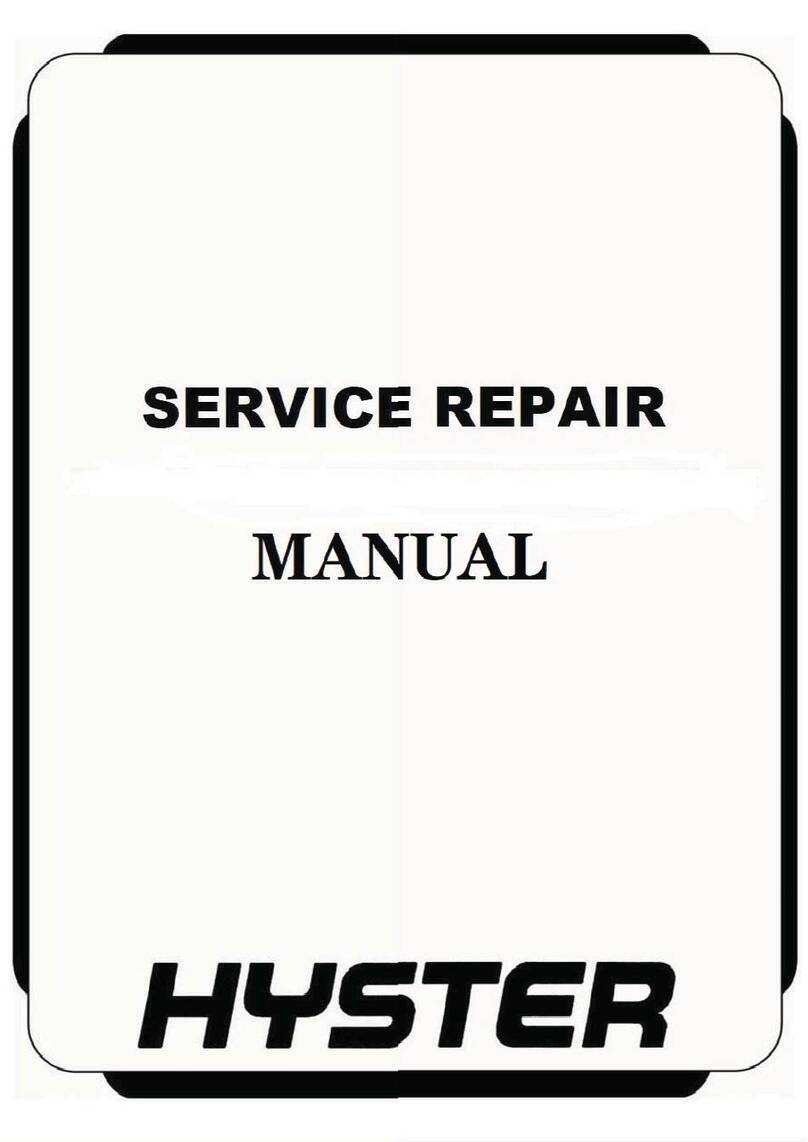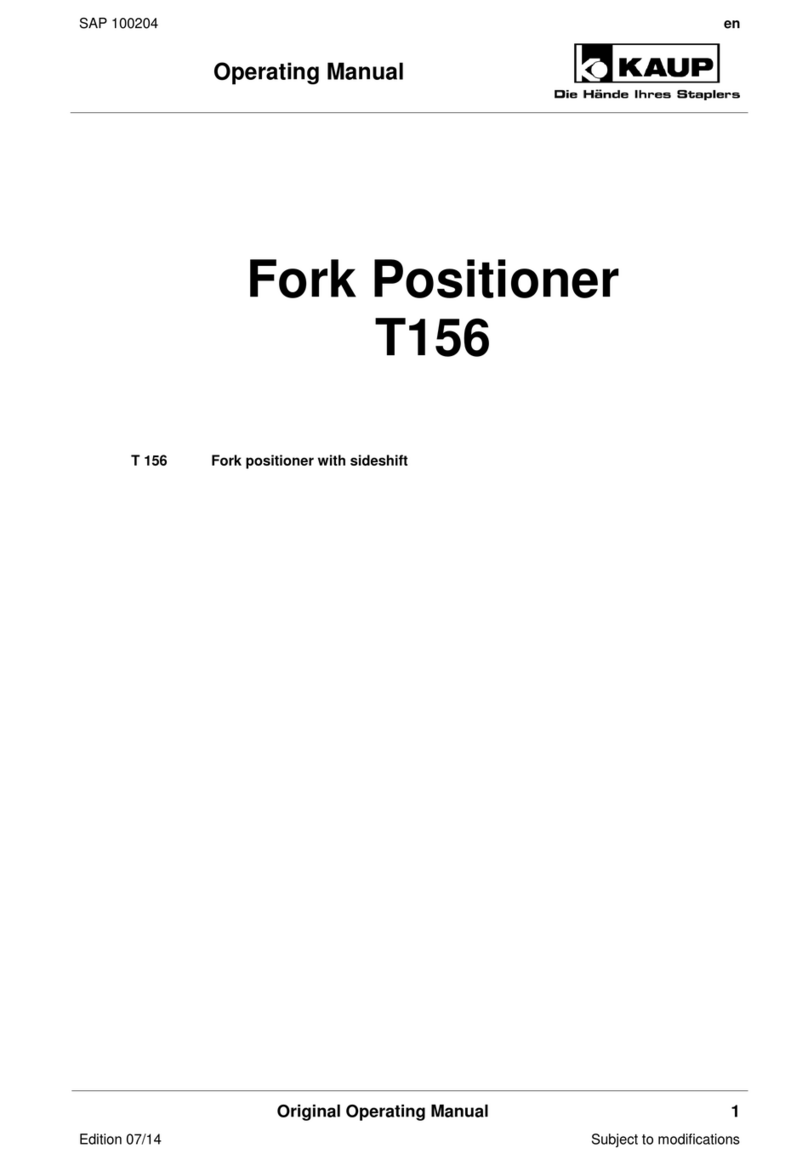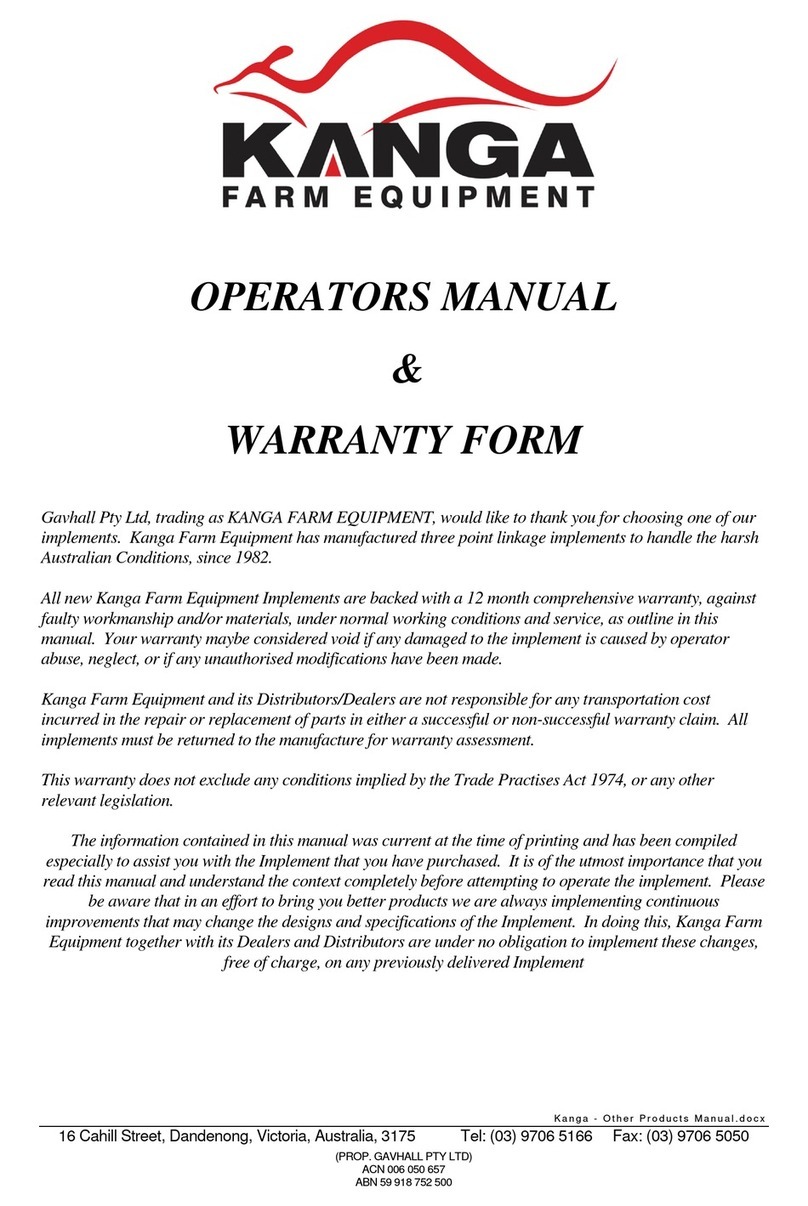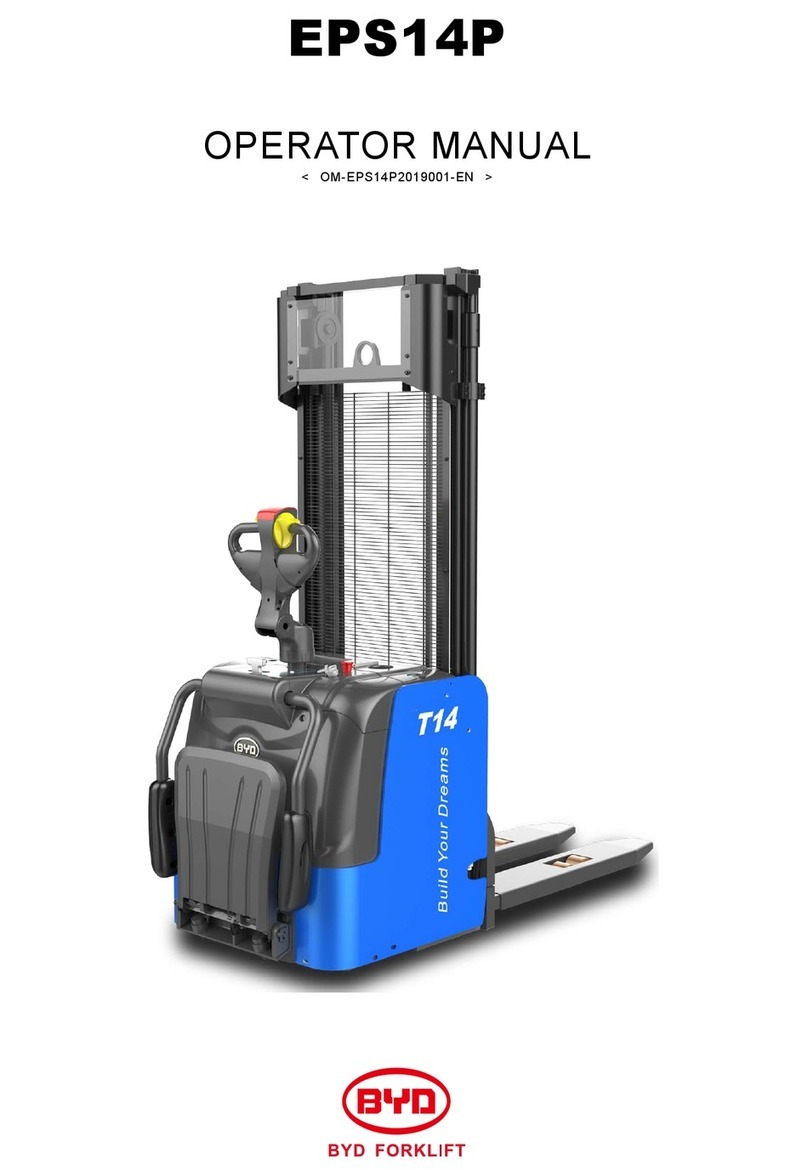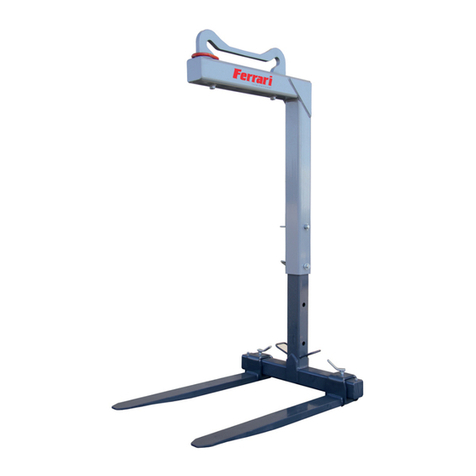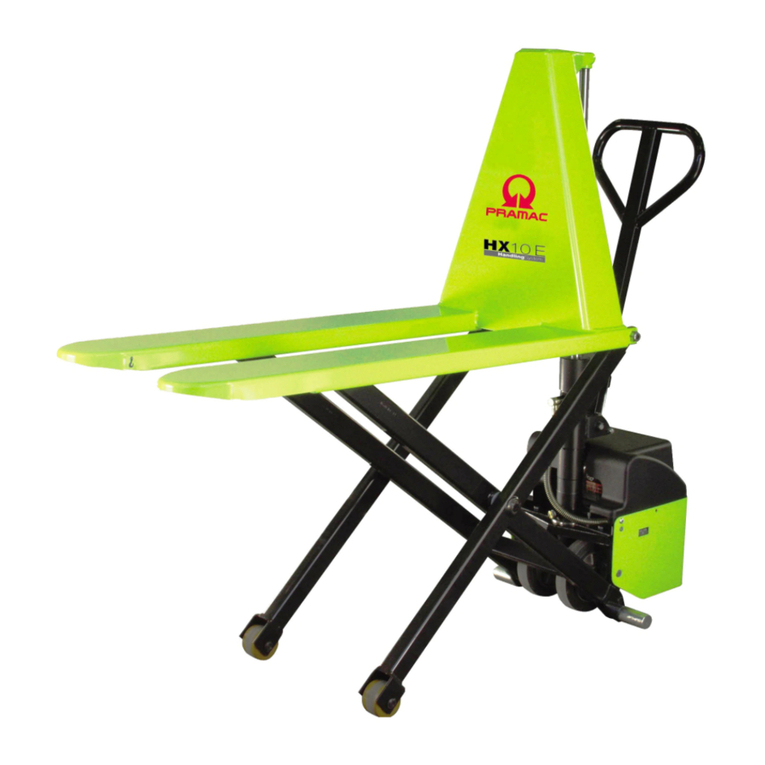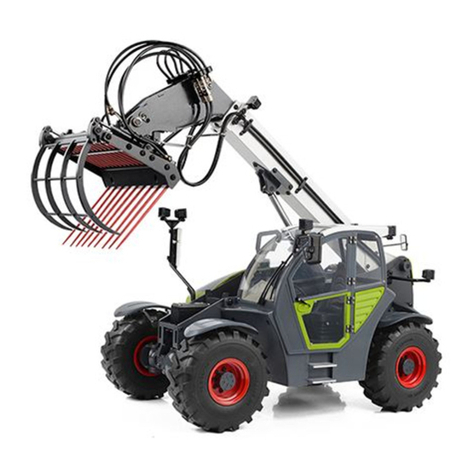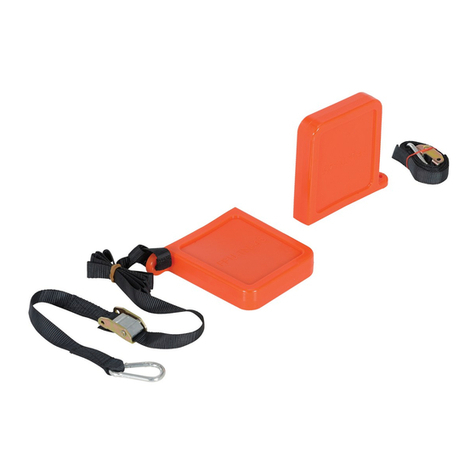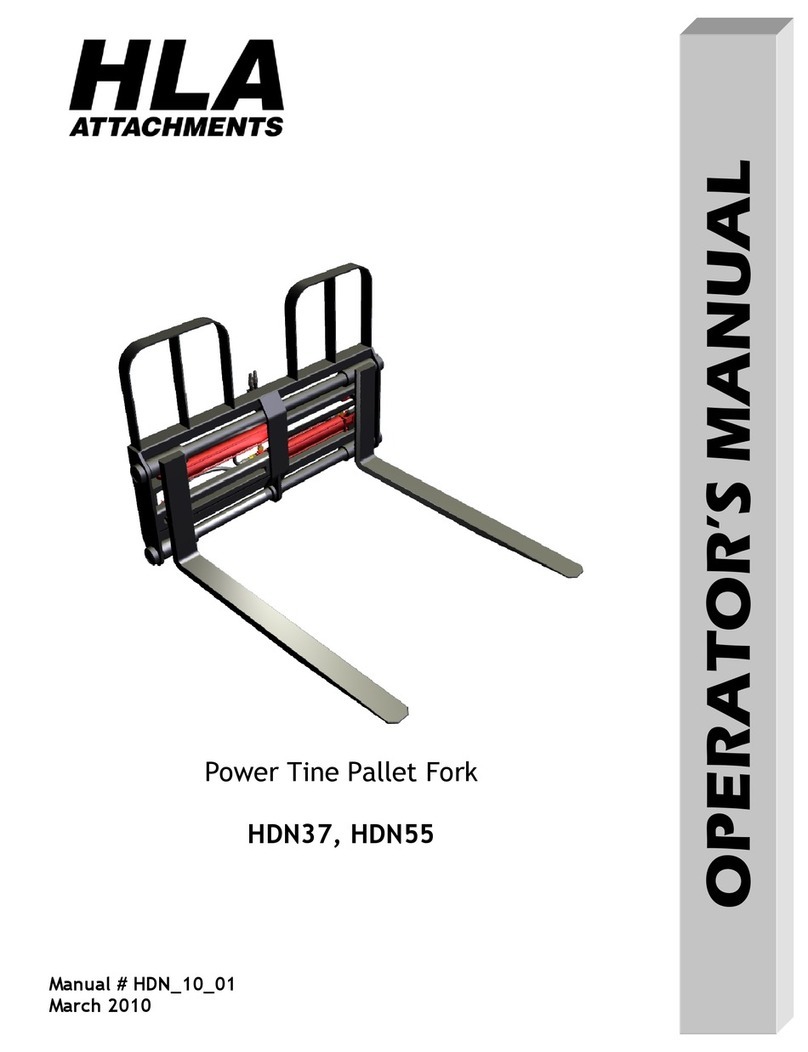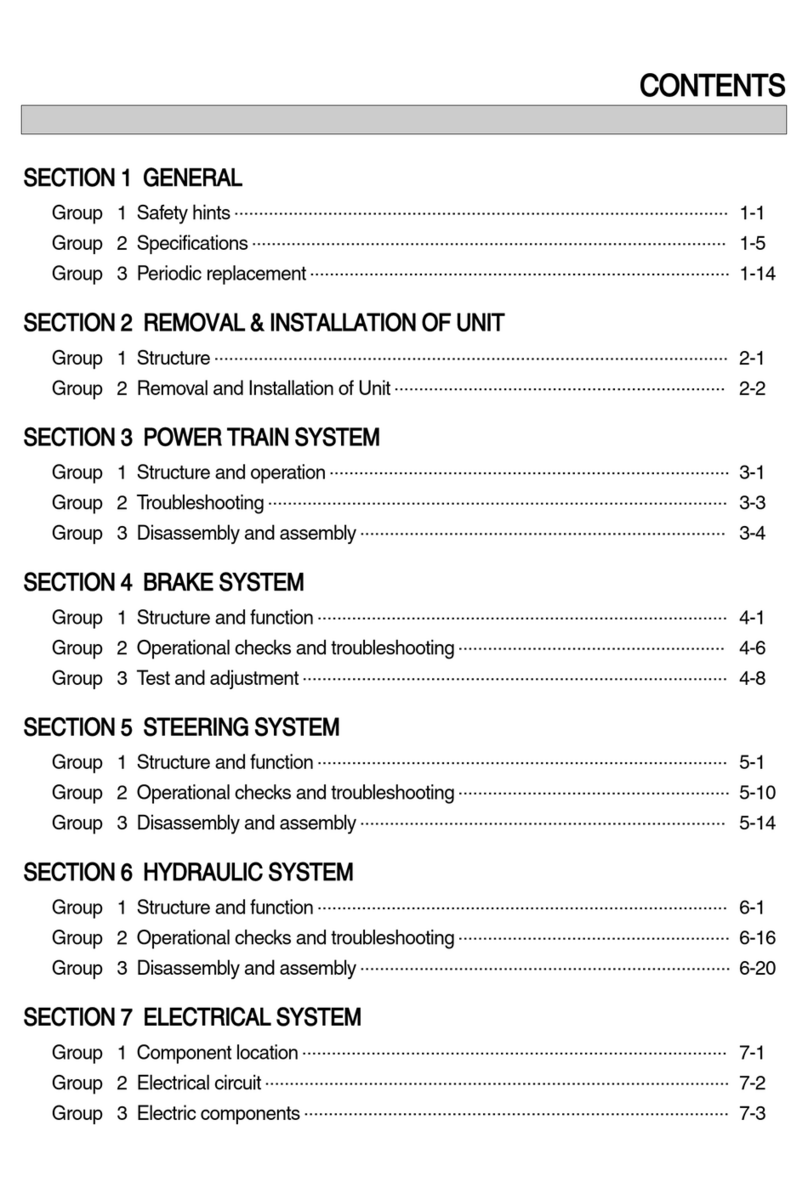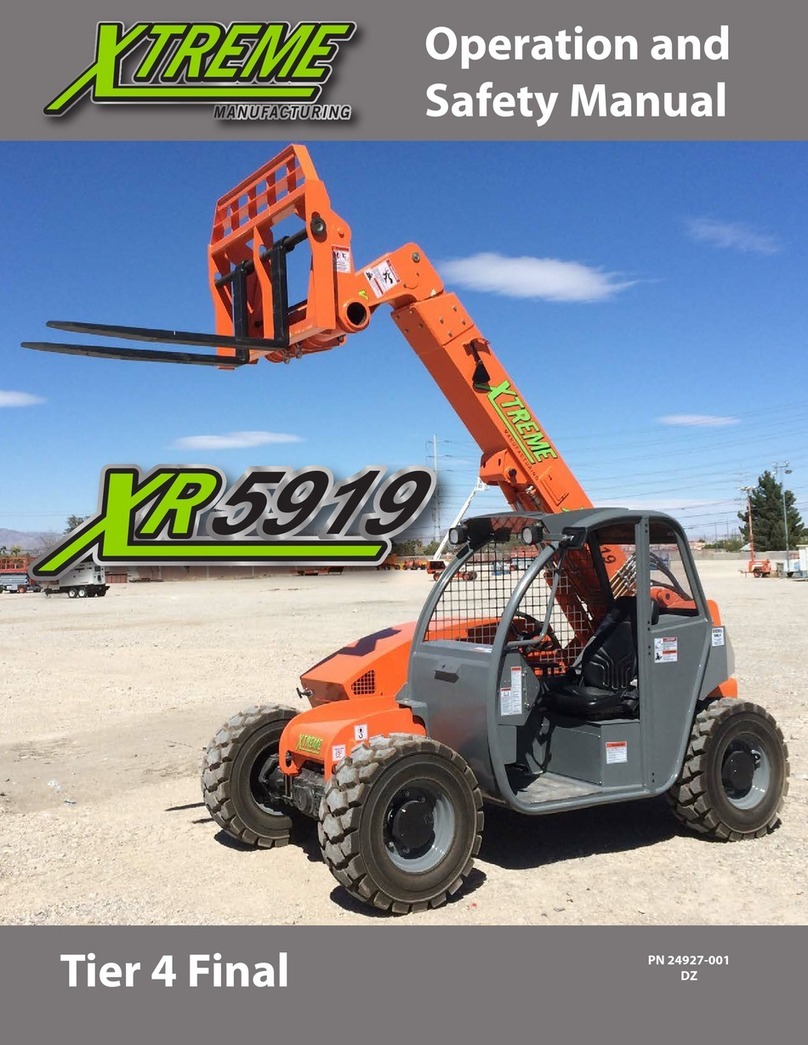Big Joe PDSR User manual

OPERATOR’S MANUAL
Big Lift LLC
www.bigjoeforklifts.com Manual Part No. 901641
08/16/2018
STRADDLE
REACH
LIFT TRUCK


1
FOREWORD
As a lift truck operator, you are
responsible for a machine that is use-
ful, powerful, and can be hazardous if
not operated as described. Your Big
Lift LLC truck may weigh more than
some cars, depending on the model.
Observing and practicing the safety
warnings in this manual cannot be
overemphasized. Just knowing the
warnings, however, is no substitute for
common sense. Focusing on the
task at hand, in almost all cases, pre-
vent accidents. Think of the truck as
your own. In this way you will learn its
capabilities and limitations.
This manual is intended to remain
with the truck at all times as a handy
reference guide to operation. Detailed
maintenance procedures are found in
the parts and service manual for the
specific truck model, and are to be
performed only by a qualified techni-
cian. For further information on
obtaining a complete parts and ser-
vice manual, see page 20 of this man-
ual.
The operator who knows his truck will
learn to spot problems as they
develop. This is accomplished by per-
forming the Daily Checks and report-
ing any problems to the designated
authority.
TABLE OF CONTENTS
SAFETY SYMBOLS..............................................................................................2
GENERAL DESCRIPTION....................................................................................2
NAME PLATE AND WARNING DECAL ...............................................................2
LOAD CAPACITY..................................................................................................4
BEFORE OPERATION..........................................................................................5
INSTRUMENTS AND CONTROLS.......................................................................7
OPERATION..........................................................................................................8
Forward and Reverse Travel and Speed Control .................................8
Steering....................................................................................................8
Stopping...................................................................................................9
Parking.....................................................................................................9
Load Handling .........................................................................................9
Battery Charging...................................................................................10
Moving a Disabled Truck......................................................................10
NOTICE - OBTAINING A PARTS AND SERVICE MANUAL..............................20

2
SAFETY SYMBOLS
WARNING and CAUTION are both signal words intended to alert the viewer to
the existence and relative degree of a hazard. They are both preceded by a safety
alert symbol consisting of an exclamation mark enclosed by a triangle.
A Warning indicates a hazard which could result in injury or death if proper pre-
cautions are not taken.
A Caution indicates a reminder of routine safety practices.
A prohibition slash (circle with diagonal slash through it) indicates a procedure or
action that should “NOT” be performed under any circumstances, as both per-
sonal injury and/or damage to equipment will result.
GENERAL DESCRIPTION
The Big Lift LLC Straddle trucks utilize
the straddle leg configuration, which
normally straddles the load.
Control for steering, braking, forward
and reverse travel, horn and speed
control are all located on the control
handle. All trucks feature an auto-
matic high speed cut-off circuit which
locks out high speed when the forks
are elevated.
Trucks in this series may vary in load
capacity, battery arrangement, instru-
mentation and lift/lower controls,
depending on model and options.
NAME PLATE AND WARNING DECAL
Warning decal locations may vary
between models, but they are always
near the steering arm within sight of
the operator. The name plate is
mounted on the right side of the truck
frame. See illustration on next page
If the name plate or warning decal are
lost or damaged they should be
replaced immediately. Have your
supervisor or the designated author-
ity contact Big Lift LLC Authorized
Dealer for replacement.
The name plate shows the model
number, serial number, and truck
type. Battery type, with voltage and
minimum weight, is shown along with
information on the load capacity and
load center.
The warning decal contains warnings
which also appear, with illustrations, in
the Operation section of this manual.

3
PDSR Name Plate and Warning Decal Locations - Typical
This truck is equipped with a battery. Read and heed the warning decal located
near the battery. An example is shown here:
WARNING:

4
LOAD CAPACITY
The further the load center is from the
backrest, the lower the load capacity.
The load center must also be no
higher than that specified above the
lifting surface (Top side of forks). For
example, a load capacity of 3,000
pounds with a load center of 24
inches means that the truck can be
used to lift 3,000 pounds to a certain
height (see name plate) only when the
load’s center of gravity is no more
than 24 inches from the face of the
forks or 24 inches above the top side
of the forks. Note that a truck under-
going speed changes is less stable
than a standing truck. If you are not
sure that the truck can lift a certain
load, consult your supervisor or the
designated authority.
Load Center
R3814

5
BEFORE OPERATION
The table on page 6 covers important
inspection points on trucks which
should be checked prior to operation.
Depending on use, some trucks may
require additional checks.
The illustration below shows a sample
formatforanOperatorChecklist,which
canbemodifiedasnecessarytofityour
operation.
Periodic maintenance of this
truckbyaQUALIFIEDSERVICE
TECHNICIAN is required.
AQUALIFIEDSERVICETECH-
NICIAN should check the truck
monthly for proper lubrication,
proper fluid levels, brake main-
tenance, motor maintenance
and other areas specified in the
parts and service manual main-
tenance section.
If the truck is found to be unsafe
and in need of repair, or contrib-
utes to an unsafe condition,
report it immediately to the des-
ignatedauthority.Donotoperate
it until it has been restored to a
safe operating condition. Do not
make any unauthorized repairs
or adjustments. All service must
be performed by a qualified ser-
vice technician.
Sample of Operator Check List
WARNING:
WARNING:
WARNING:
R6235

6
Operator Checks
ITEM PROCEDURE
Transmission and hydrau-
lic systems Check for signs of fluid leakage.
Forks Check for cracks and damage and that they
are properly secured.
Chains, cables and hoses Check that they are in place, properly secured
and not damaged or leaking.
Guards and load backrest Check that safety guards are in place, prop-
erly secured and not damaged.
Safety signs Check that warning labels, data plate, etc., are
in good condition and legible.
Horn Check that horn sounds when operated.
Steering Check for binding or looseness in steering
arm when steering.
Travel controls Check that speed controls on control handle
operate in all speed ranges in forward and
reverse and that belly button switch functions.
Wheels Check drive wheel for cracks or damage.
Move truck to check load wheels and casters
for freedom of rotation.
Hydraulic controls Check operation of lift, lower and reach to
their maximum positions.
Brakes Check that brakes actuate when steering arm
is raised to upright position, and when lowered
to horizontal position.
Deadman/Parking brake Check that steering arm raises to upright posi-
tion when released and brake applies.
Battery disconnect Check that battery can be disconnected and
reconnected. Check for connector damage.
High speed limit switch Allow for enough space to operate truck in
high speed. Elevate forks approximately two
feet, then test drive truck to check if high
speed is cut out.

7
INSTRUMENTS AND CONTROLS
Thesteeringarmprovidessteeringand
brake control. The control handle pro-
vides controls for forward and reverse
speed control, braking, horn, and rais-
ing,lowering,reachandsideshiftofthe
forks. Control handles on all models
have a “belly-button” reversing switch
whichreversesthedirectionofthetruck
upon contact with the operator.
Detailed operating instructions are in
the Operation section of this manual.
A battery disconnect is mounted near
thesteeringarm.Pullingthedisconnect
removesallpowerfromtruckcircuitsin
the event of an emergency.
Control Handle

8
OPERATION
Forward and Reverse Travel and
Speed Control
Controls
The control handle activates the
brake, slow speed and high speed.
Forward and reverse are controlled by
rotating the travel control lever as
shown. The lever is spring loaded to
return to neutral when released. Fur-
ther rotation in either direction will
progress the truck from slow to maxi-
mum travel speed.
To change directions or to stop the
truck, rotate the speed control lever in
the opposite direction. The truck will
come to a stop and then, unless the
controls are returned to the center
neutral position, accelerate in the
opposite direction.
Steering
Moving the control handle (which con-
nects to the steering arm) right or left
will turn the truck right or left. When
maneuvering around corners, make
square turns and be sure there is
adequate clearance.

9
Stopping
Stop the truck as gradually as possi-
ble. Unnecessary rapid stopping could
be hazardous. The load could
become unstable.
To stop the tucks movement (forward
or reverse), raise the control handle to
the up position or push the control
handle all the way down. In both posi-
tions, the electric brake will activate
and the brake will apply. To release
the brake, just move the control han-
dle to the operating position.
NOTE: The steering arm gas spring
automatically raises the
steering arm to the upright
position when the steering
arm is released.
CAUTION: If the control handle does
not raise immediately to
the vertical position when
released, the truck should
be placed “OUT OF SER-
VICE” until it can be
inspected by a qualified
repair technician.
Parking
When parking the truck, do not
obstruct traffic lanes or aisles.
1. Park the truck in its designated
parking area.
2. Raise the steering arm until verti-
cal to apply the parking brake.
3. Fully lower forks.
4. Turn keyswitch to off position.
Remove key for added security.
5. Pull out battery disconnect.
6. Push in emergency brake switch.
Load Handling
Handle only loads arranged for
stability and always use cau-
tion. Raise and lower the load
smoothly to prevent the load
from falling.
Always be sure the load and
load center are within the
capacity of the truck. If in doubt
check the data plate.
1. Approach the load slowly.
2. Stop the truck when the forks are
just in front of the load.
3. Adjust the forks to the maximum
practical width to support the load
to be lifted.
4. Raise or lower the forks until they
are properly aligned with the
height of the pallet openings.
5. If equipped, side shift the forks to
help align with the pallet open-
ings.
6. Move the truck to align forks with
pallet or skid as close as possi-
ble.
7. Extend lift carriage so the forks
are within pallet or skid, and the
load is centered over the forks
and as far back as possible.
WARNING:
WARNING:

10
8. Tilt lift carriage back, then raise
the forks to lift load.
9. Move the truck away from the
rack. When the load is clear,
retract and lower the forks, leav-
ing enough floor clearance to
maneuver truck.
10. Always operate the truck with the
forks in the DOWN position and
slightly raised when operating on
a grade.
11. Lead the truck by the control han-
dle with the load trailing except
when in confined areas. Ramps
should be traveled with operator
uphill of truck when empty, or
operator downhill of truck with
load on forks.
12. Always look in the direction of
travel. Move slowly and check
clearances when approaching
obstructions.
13. Do not make sudden starts and
stops. Operate truck smoothly
and gradually.
14. Travel slowly and squarely
around corners. Remember that
the trailing load wheels do not fol-
low the turn path of the drive
wheel; instead, they tend to cut
the corner.
15. Line up the truck with the unload-
ing area.
16. Extend the load and adjust the
side shift until the load is cen-
tered over new position.
17. Lower the load and tilt down as
necessary until the load rest
squarely in place and the forks
are free.
18. Carefully move the truck away
from the load watching to make
sure the load doesn’t move or
shift. If the load does move,
return the truck to the load and
reset.
NOTE: Make sure when working in a
rack area, that you do not
disturb another load while
placing yours in the rack.
This may cause a danger-
ous situation for other opera-
tors or pedestrians working in
this area later.
19. If forks are elevated, lower and
retract to travel position.
Battery Charging
Refer to Supplement 245 on
www.bigjoesupport.com for
battery safety and maintenance.
NOTE: Battery charging instructions
are contained in the service
manual.
Moving a Disabled Truck
Do not attempt to move a disabled
truck; notify your supervisor or proper
authority.

11
The following operating instructions appear on the truck warning decal, which is
located near the steering arm or on the doors.
Do not operate this truck unless you
have been trained and authorized to do
so, and have read and understand all
warnings and instructions contained in
this operator’s manual.
Do not operate this truck until you have
checked its condition. Give special atten-
tion to wheels, horn, lights, battery, con-
troller, lift systems (including forks or
attachments, chains, cables
and limit switches), brakes,
steering mechanism, guards
and safety devices. If you
have any questions, notify
your supervisor or proper
authority.

12
Operate truck only from walking
position. Do not ride on truck.
Never place any part of the body
into the mast structure.

13
Do not carry passengers.
Keep feet clear of truck
and always wear foot
protection.

14
Observe applicable traffic regulations. Yield right-of-way to pedestrians.
Slow down and sound horn at cross aisles and wherever vision is
obstructed.
Start, stop, travel, steer and brake
smoothly. Slow down for turns and on
uneven or slippery surfaces that could
cause truck to slide or overturn. Use
special care when traveling without
load as the risk of overturn may be
greater.

15
Travel with lifting mechanism as low as
possible. Always look in direction of
travel. Keep a clear view, and when load
interferes with visibility, travel with load
or lifting mechanism trailing.
Use special care when
operating on ramps;
travel slowly and do not
angle or turn. Travel
unloaded with lifting
mechanism downhill
and travel loaded with
load uphill.

16
Do not overload truck.
Check name plate for load
weight capacity and load
center information.
When using forks, space forks as far
apart as load will permit. Before lifting,
be sure load is centered, forks are com-
pletely under load, and load is as far
back as possible against load backrest.

17
Do not handle unstable or
loosely stacked loads.
Use special care when
handling long, high or
wide loads to avoid
losing the load, striking
bystanders or tipping the
truck.
Do not handle loads which are
higher than the load backrest or
load backrest extension unless
load is secured so that no part
of it could fall backward.

18
Elevate forks or other lifting
mechanism only to pick up or
stack a load. Lift and lower with
mast in the vertical position.
Watch out for obstructions,
especially overhead.
Do not lift personnel on forks or work
platform with this truck. It is not designed
for this function and someone could
get seriously injured if they fell
off. Use the correct equipment
for this task.
Table of contents
Other Big Joe Forklift manuals
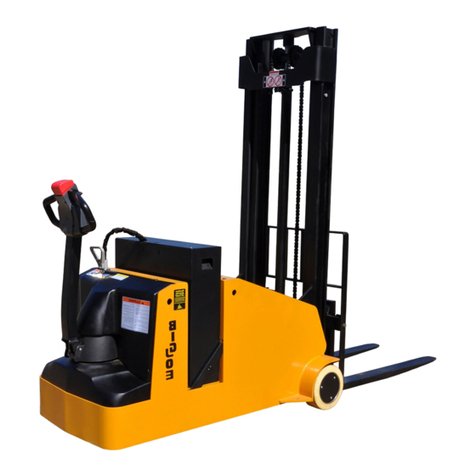
Big Joe
Big Joe CB22 User manual

Big Joe
Big Joe PPT 45 Series Use and care manual
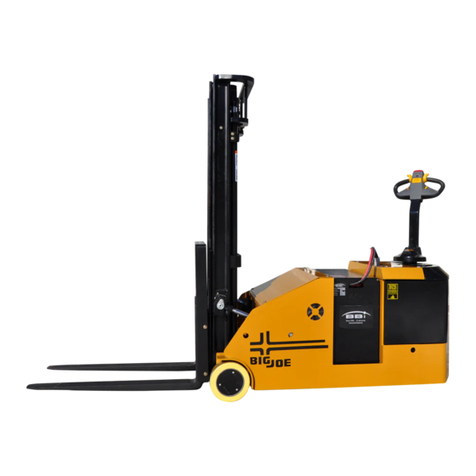
Big Joe
Big Joe CB33 User manual
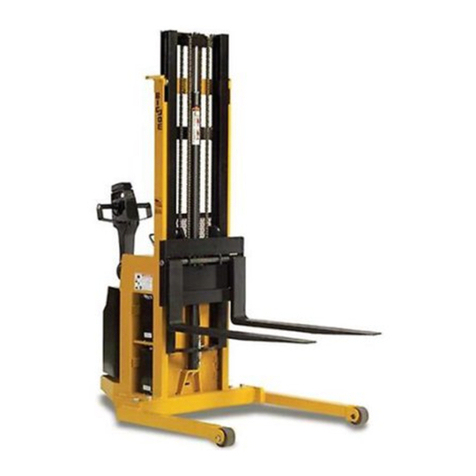
Big Joe
Big Joe PDI Series User manual
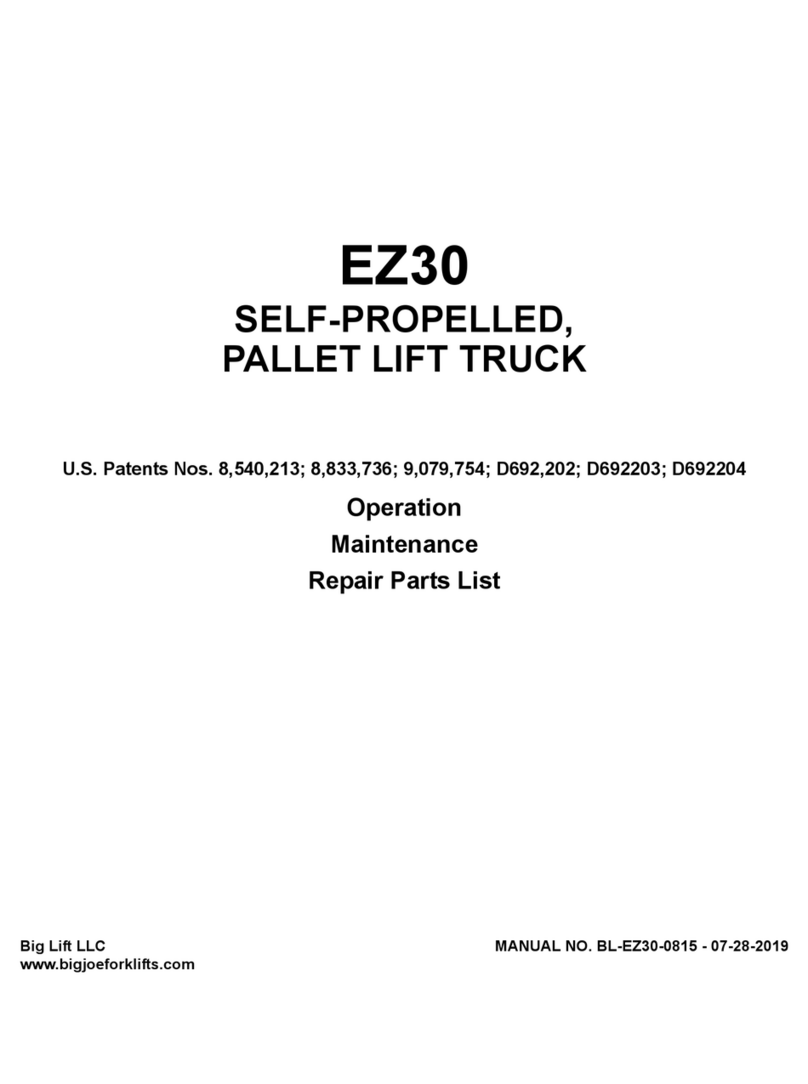
Big Joe
Big Joe EZ30 Use and care manual

Big Joe
Big Joe T15 User manual
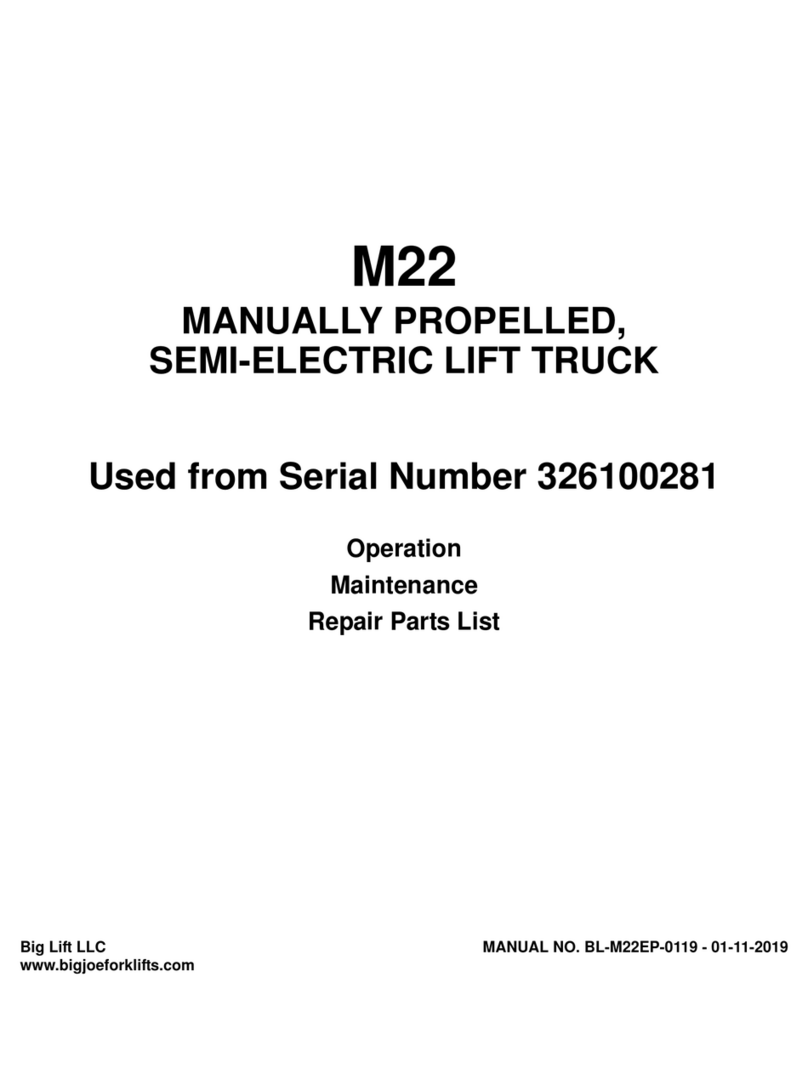
Big Joe
Big Joe M22 Use and care manual
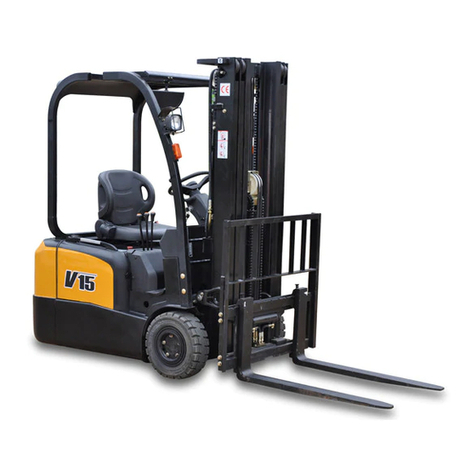
Big Joe
Big Joe V Series User manual

Big Joe
Big Joe PDS 20 User manual

Big Joe
Big Joe E30 User manual

